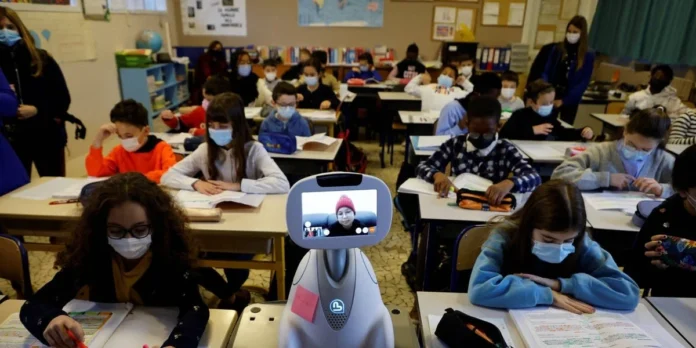A clever computer-generated pun might not win any comedy awards, but it does signal how far artificial intelligence has come—moving beyond repetitive tasks to even creating humor. This evolution raises important questions: if a computer can generate a joke, what other traditionally human roles might it soon take on?
Artificial intelligence is increasingly influencing education, with technology companies and publishers exploring its commercial potential. Could a robot ever replace a teacher when it comes to answering student questions? Recent experiments suggest that automated systems might indeed be capable of providing timely and accurate assistance.
For instance, Georgia Tech in Atlanta introduced a digital teaching assistant named Jill Watson during a postgraduate course. Unbeknownst to the students, Jill Watson was actually a robot that answered questions in an online forum much faster than a human teaching assistant would. According to Dr. Tarek Besold, speaking at an educational technology conference in Berlin, such robotic systems are not only capable of performing routine tasks but can also display a form of creativity—though they may struggle when required to adapt knowledge to new situations. For example, while a human skilled at chess might easily learn draughts, a computer programmed solely for chess might falter without additional training.
The potential of these systems goes beyond efficiency. Their always-on availability means they never tire or get distracted, offering consistent feedback and support. However, there are more nuanced concerns. Would students value positive feedback from a machine in the same way they do from a person? Can a robot truly provide the empathy and encouragement that form the cornerstone of effective teaching? After all, education is not just about delivering correct answers—it’s about nurturing the ability to think critically and explore ideas.
Professor Donald Clark from Derby University has argued that no area, including teaching, will remain untouched by automation. He suggests that if artificial intelligence is expected to replace jobs in accounting, law, and management, why should teaching be any different? The continuous advances in big data and computing power mean that increasingly sophisticated tasks, once thought to be exclusively human, are now being automated.
Building on this trend, Pearson, a global education company, has been testing a project that integrates an interactive textbook, an online course, and an automated tutor powered by IBM’s Watson system. In this setup, students interact with the system much like a messaging conversation, where the digital tutor asks questions, provides prompts, and offers help. While this technology is still in its experimental phase, Pearson and IBM are planning a broader rollout in the near future.
Despite these advances, some experts remain cautious. Stavros Yiannouka, CEO of the Wise project under the Qatar Foundation, pointed out that technology alone does not drive meaningful change; rather, it is public policy that truly transforms education. Moreover, concerns have been raised about potential social inequalities. There is a risk that low-cost, semi-automated courses could create a divide, offering a pared-down educational experience for those who cannot afford traditional teaching.
Entrepreneur Nell Watson emphasized that while artificial intelligence can serve as an efficient tool, it will never fully replicate the role of a teacher. She argued that the ability to nurture and help a student “blossom” is something that an algorithm cannot achieve, especially when it comes to appreciating truly innovative work.
In a broader context, figures like Mark Carney, the Governor of the Bank of England, have warned that automation could replace up to 15 million jobs in the UK, including many in the middle class. This observation underscores the sweeping impact of automation across various sectors—including education.
Ultimately, the question remains: as automated systems become more advanced, will we soon see a shift from traditional teaching to a more digitally driven model? The future may well hold a blend of human and machine collaboration in education, ensuring that while robots can handle many tasks, the uniquely human elements of empathy and creativity remain irreplaceable.





